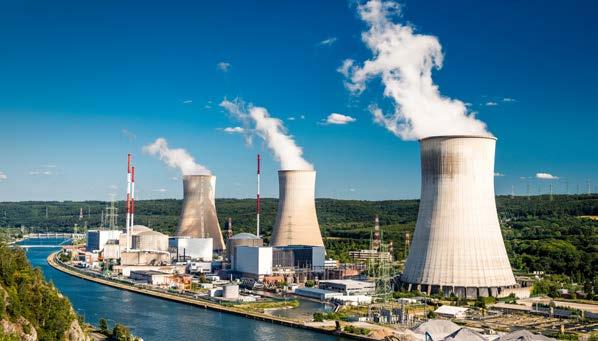
4 minute read
Infrastructure Risk SIG
Darren Mullan, CFIRM, Former Chair
Obviously, the specific risks facing each construction project will depend on the nature, size and location of the project but, in general, three key risks will include:
1. Productivity
Whether construction projects have been able to continue during the current Covid–19 crisis, or intend to recommence at some stage in the future, productivity will be affected for some time into the future. This reduced productivity may be caused by: > Reduced workforces being allowed onto to the construction site > Constraints on how staff access/egress, or move about within, the construction site > How welfare and canteen facilities are used
> The introduction of different working practices to maintain social distancing The key area of uncertainty, and thus challenge for the construction projects, will be the understanding of and acting on: > The degree to which productivity is affected across different parts of the site/project
> How long this impact will last > Probably most importantly, who will be liable for the cost and time consequences of both the impact itself and the recovery plan
2. Supply of equipment, plant and materials
A second key risk will be the obvious disruption caused to the supply of construction equipment, plant and materials - especially as more and more of the construction supply chain is global. These problems could by caused by a number of potential issues anywhere across the end-to-end supply chain; for example the manufacturing factory may be shut due to local government regulations, maybe the goods are be sitting in a seaport or airport which has been similarly shut down, or maybe the equipment is still on a previous construction site and has not been released. Again the key challenge for the construction project will be to: > Accurately understand and forecast when current orders for delayed equipment, plant and materials will arrive
> Explore potential mitigation, such as re-sequencing construction activities > Consider the potential for a Covid–19 ‘second wave’ and the need to pull future orders early, increase equipment leases, or increase local inventory levels for critical materials > Agree a revised Programme, and how to deal with potential extensions of time and who pays for any additional mitigation actions
3. Sustainability of the construction sector
The third, and arguably the most difficult to understand, risk is the impact on the longer-term sustainability on the construction sector, across contractors, engineering consultants, employers, etc. These impacts:
> Will obviously include pressure on cashflow, ability to get finance and credit, and mobilisation of resources
> Could affect current, as well as future construction projects > May be the secondary result of a problem on another project This risk is difficult to assess, and will probably have to rely on the use of early risk indicators/precursors such as:
> Reported problems on other projects (e.g. where a party is late paying invoices or where a contractor is not fully mobilised) > Evidence of low staff retention, redundancies, or frozen recruitment
> Delays or problems getting performance bonds and insurances However even if an area of risk is detected, mitigation options will be limited by the nature of the construction contracts.
Across the three key risks listed above, or in fact other risks being caused by Covid–19, risk managers can help to tailor and apply the following advice: > Whatever role you have in the construction project (e.g. employer, engineer, contractor, project manager, etc,) and whatever type of contractual form you are operating under, it is important that all parties in the project proactively take steps to: > Inform each other of actual, or potential, impacts > Creatively consider what can be done to mitigate any impact > Respect the relevant clauses of the construction contract, when it comes to notifications, as well as assigning liability for extensions of time and associated costs. The key challenge is to foster the right behaviours and culture to support early identification, acknowledgement and mitigation of the risks. > The medium-term impacts of Covid–19 are still uncertain, and therefore it is as important as ever to use scenario analysis to guide initial recovery actions as construction projects emerge from the current crisis.
As a minimum considering both the: > Best-case scenario, which may reflect a quick V-shaped bounce back to same conditions and environment prior to the Covid–19 crisis
> Worst-case scenario, which may be a slow L-shaped recovery profile - maybe never fully recovering to
For each scenario, have a co-ordinated set of funded actions, but also have clear ‘go/no go’ milestones to allow all parties to reflect on how the recovery is actually taking place and allow you to review and adjust your planned actions. > Acknowledge that as we restore construction projects, the impacts of the Covid–19 may be lengthy and potentially enduring, and ultimately result in ‘new normals’, such as: > Revised industry-standard construction methods and lower productivity levels > The need for different suppliers, longer lead times, and locally-held inventory levels for equipment, plant and materials
> Differing contract forms and constraints, covering issues such as performance bonds, insurances, invoicing terms and schedules, allocation of time and cost relief, etc. It may be appropriate to review and amend how risk is allocated within construction projects, both for future projects or possibly where current projects are still at an early stage. Ultimately if the risk profile has fundamentally changed, the allocation of this risk exposure may need to change if the longer-term sustainability of the project, and the commitment of all parties, is to be maintained. By using professionally trained and certified risk managers, organisations can assure themselves and their key stakeholders that: > Their risk identification, assessment and management tools and techniques are aligned with international best practice > The key risk management outputs, upon which key decisions will be made, will be robust > Any critical areas of uncertainty will be identified, so that appropriate confidence levels can be applied.







